
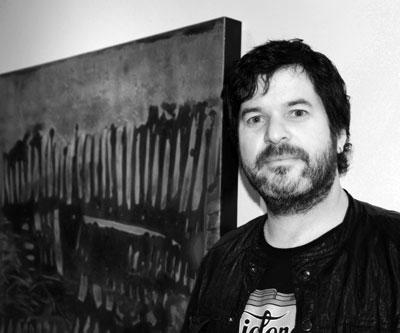
Describe this new work and its origins.
I began focusing on nature and abstractions of natural themes four or five years ago. More recently, I began painting abstract forest scenes from my imagination. At the same time, I had been admiring the use of gold leaf and gold paint — from medieval chapel ceilings, illuminated manuscripts and even more contemporary work. But it was always used sparingly, as an accent, and I wanted to use the gold in a bolder way than that… making it the subject of the painting. Its reflective qualities – the way it glows, its warmth – it’s almost like a bonfire or a fireplace. It can bring back childhood memories of warmth, sitting around the fireplace with your family, having a bonfire with friends. And I love the way these paintings change throughout the day, along with the light of the room. The way it looks in the morning, with sunlight streaming through a window… the way it changes when the lights are switched on. My favorite surprise is when you turn the lights down… and suddenly the painting takes on an entirely new quality – as the gold reflects the remaining light, the foreground becomes the background and the background becomes the foreground. It’s a completely different painting.
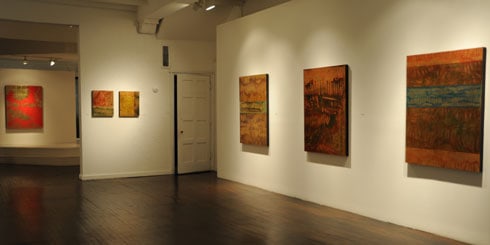
Talk about the gold leaf.
I bought a gold leaf kit but had no intention of being confined by the instruction manual.
I didn’t want it to be traditional. I wasn’t as concerned with the craft of gold leafing — I wanted to explore its possibilities as a medium. From my experimenting, I discovered I
could tarnish and oxidize the surface in a very controlled way. I liked the destruction and decomposition of the shiny, perfect surface. Think about what gold symbolizes – money, power, wealth. The parallels to today’s economic struggles were impossible to miss. When I manipulated the gold’s surface, giving it layers and depth, I also felt the meanings of the paintings begin to grow and reveal themselves.
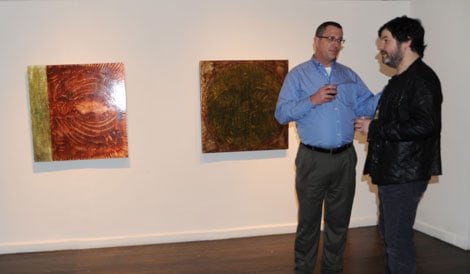
Where do the dots, lines and shapes in the paintings come from?
It started as merely organic mark-making – total abstraction. But the more I did this, the more I began noticing the marks were reminiscent of animal and plant structures, as well as ancient patterns. I started looking at images of Maori tattoo art, ancient Irish symbols and even photographs from archaeological digs. I began seeking out these images as my marks were revealing rhythms that felt familiar in me.
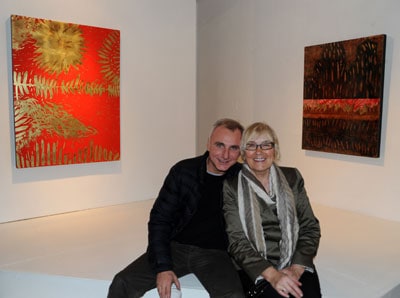
The reaction to this work has been really positive. People are drawn to these paintings in a very deep and emotional way. I think that speaks to the warmth of the reflective light — and the abstracted ancient themes. I think we’re subconsciously drawn to nature and
symbols. All of us feel a connection to primitive expressions of humanity. I’m still in the midst of exploring all of this, discovering new possibilities. Right now, I’m thinking about working in an even larger scale… and perhaps diptychs and triptychs.
Photo: By Jolanta Pawlak: www.jolantapawlak.blogspot.com
thomas masters gallery
245 west north ave, chicago; 312 440 2322
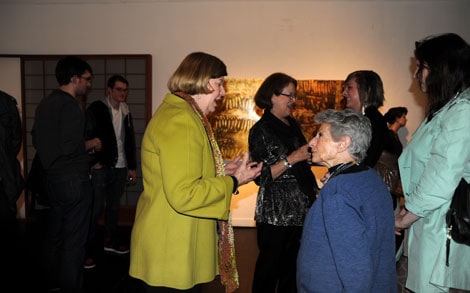
During the exhibition of painting at Thomas Masters Gallery.
